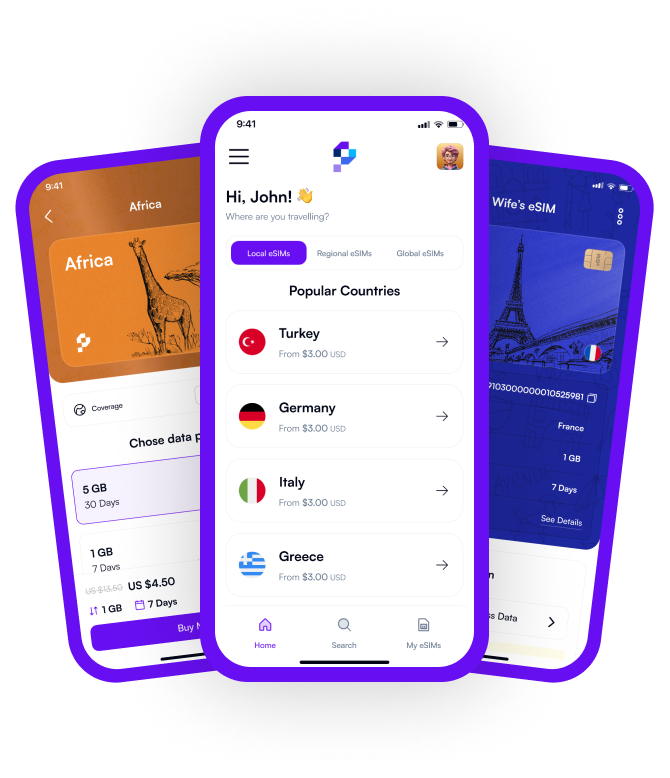In mobile communication, users encounter various SIM card options tailored to their needs and preferences. Local SIM cards are the most cost-effective choice for usage within a specific country.
While international SIM cards provide convenience when traveling abroad, they may come with higher costs. However, E-SIMs serve as a virtual replacement for physical SIM cards, allowing users to switch between service providers easily and quickly.
When choosing among these three types of SIM card, you should consider factors such as coverage area, price, and user-friendliness.
E-SIM’s Prominent Features
E-SIM is a groundbreaking technology in mobile communication. Unlike physical SIM cards, E-SIM is a digital SIM card embedded in your device. As a result, you can effortlessly switch operators without the need to visit a store to get a new SIM card.
E-SIM usage provides flexibility, especially for frequent travelers. Users can effortlessly shift between plans that cover multiple countries or regions.
Furthermore, E-SIM enables the use of multiple numbers on a single device, facilitating the management of personal and work numbers on the same phone. Additionally, since there’s no need for physical SIM cards, E-SIMs can be used in wearable devices like smartwatches and fitness trackers.
From a security perspective, E-SIM has advantages over physical SIM cards, as there is no risk of loss or theft. The adoption of E-SIM is increasing, and it is shaping the future standards of mobile communication by significantly enhancing the user experience.
Coverage Area: Which SIM Card Covers a Wider Area?
Different types of SIM cards vary in terms of coverage area. With local SIM cards, users typically have access to the best coverage within the purchased country. However, issues such as high fees and variable coverage areas may arise when traveling abroad.
International SIM cards are designed to operate across multiple countries and regions. While they provide broad coverage during travel, they often do not offer the same speed or quality of service as local operators. Additionally, their costs are typically higher than local SIM cards.
Despite the extensive coverage areas of international SIM cards, E-SIM technology offers even more coverage and ease of use. Unlike physical SIM cards, E-SIMs can be digitally loaded onto devices and store multiple network provider profiles.
E-SIM technology enables users to communicate with local rates even when traveling to other countries. As a result, users enjoy both cost-effective and comprehensive communication services. Thus, E-SIM provides a practical and contemporary solution to coverage and cost issues during travel
Cost Comparison: Local SIM vs. International SIM vs. E-SIM
The costs of local, international, and E-SIM cards vary based on travel and communication preferences. Local SIM cards are generally the most affordable because local operators offer competitive prices for calls, messaging, and data.
Using these cards abroad may require you to pay high roaming fees, which reduces its cost advantage.
International SIM cards are designed for convenient use across multiple countries. However, they are often more expensive and subject to higher roaming charges. These cards are suitable for those who visit multiple countries for short periods, but they can become costly when used over an extended period. Unlike physical SIM cards, E-SIMs allow users to easily evaluate fees from various providers. This flexibility helps users find the most suitable and economical option, enabling effective cost management.
During long-term travel, E-SIMs can help reduce costs by:
· Facilitating easy transition between operators offering affordable roaming plans or local rates.
· Leveraging their potential to optimize costs and provide usage flexibility.

